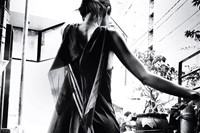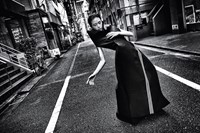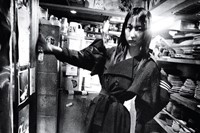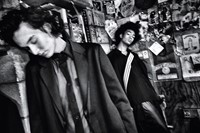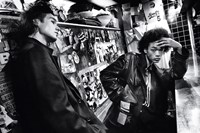This article was taken from the Spring/Summer 2023 issue of AnOther Magazine:
Daido Moriyama’s street photography has the quality of a recurring dreamscape, a place to which you return, and from which you cannot entirely escape. The images are hallucinatory, dense with information, visual tangles that the mind cannot immediately unpick. Although they are taken at all times of day, Moriyama has a preference for night. As a body of work his photographs seem to occur in perpetual dark: mysterious, opaque, seductive.
The effect is a vision so distinct that it converts exterior circumstances – the time of day, even the date and historical period – into a singular vision. Over the years, Moriyama’s vision of Tokyo has, at least for some of us, become an overlay resting on the city itself, a referential filter through which we perceive the landscape of its streets. Moriyama’s favoured neighbourhood of Shinjuku is, to some, most familiar through his photographs.
There are the images of crowded streets, of shoppers and panhandlers, of lights and signs, always pulsing with energy. But what is most particular about Moriyama’s photographs is the way they capture precise moments in the history of both the city of Tokyo and the country of Japan more generally; to see the city through the filter of Moriyama’s images is to be constantly reminded, constantly aware, of its history and evolution, its status as a place in flux.
Out of this haunted, or haunting, landscape emerge the figures for which Moriyama’s work is celebrated. The tension between figure and backdrop is rarely more charged than it is in a Moriyama photograph. The figure – whether a stray dog, or a cluster of women hurrying down the street – emerges from the backdrop, from the particular social context and psychological terrain evoked by Moriyama’s street corners and alleys.
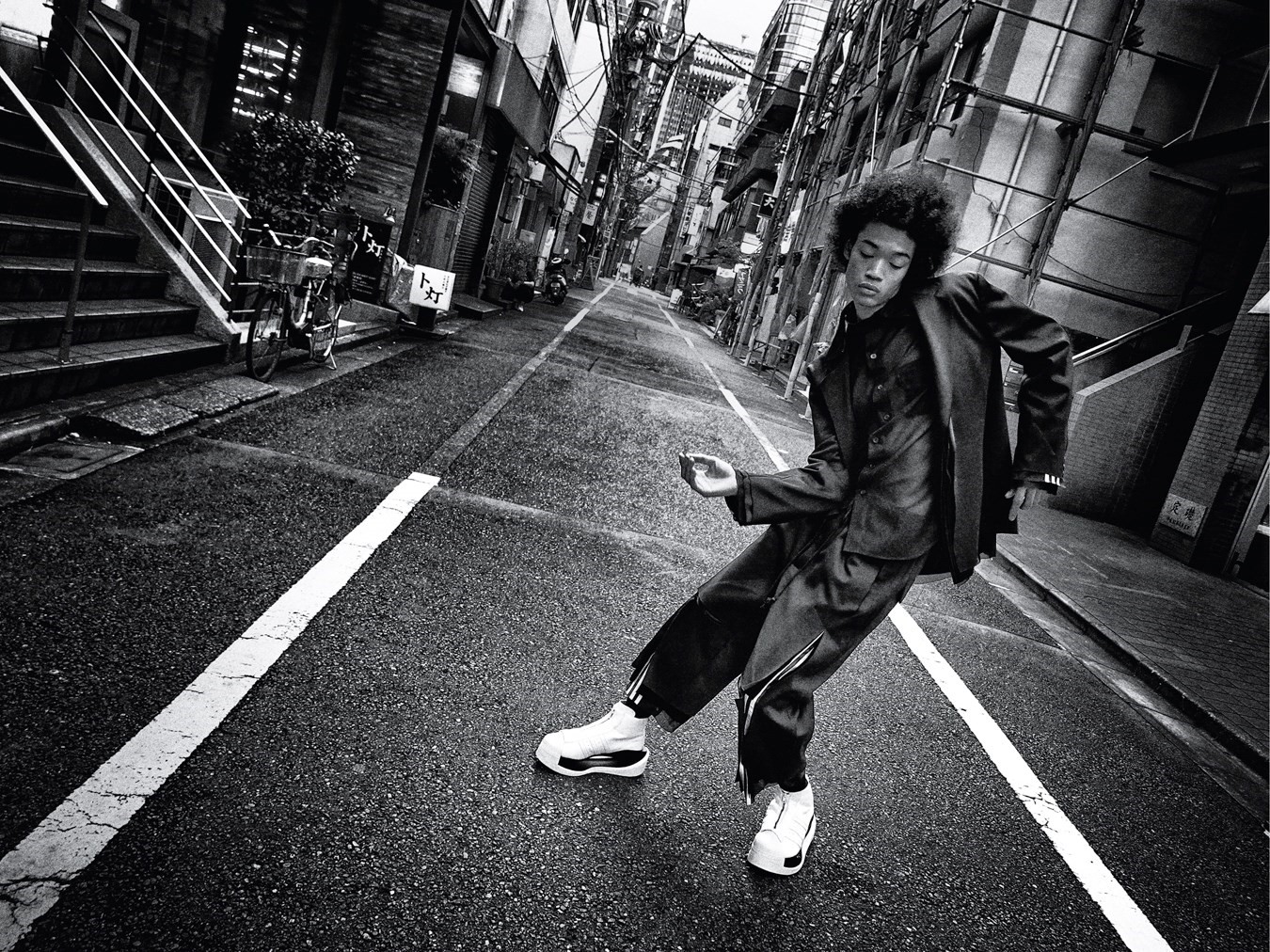
The figures often seem to be in a state of struggle, so that the backdrop enacts a complicated embrace – home, but the kind of home that thrusts the subject into a state of tension and even distress. The expressionistic tendencies of Moriyama’s work, the use of shadow and distortion, can feel most acute when they are centred on the body. In these figures, caught in motion or at rest, the blurring and the graininess seem to transmit no small amount of psychological tension.
Yohji Yamamoto’s work is renowned for its attention to the body and its capacity for movement, a design philosophy that makes his clothing feel capacious in more than a simply literal sense. His designs are filled with possibility. By redefining how we inhabit clothes he also alters the parameters of identity and being, and how they are performed. At first glance, the aesthetic principles of Yamamoto and Moriyama seem to work in opposition: the clean, reduced lines of Yamamoto’s artful constructions against the clutter, the density of Moriyama’s photographs. Reduction, as opposed to amplification.
Both create work that is so distinct, so instantly recognisable and so thoroughly authored, and yet Moriyama and Yamamoto achieve an ideal collaboration. Here, their work appears entirely itself but also gently reconfigured and transformed. When combined, a productive tension plays out, in part because there appears to be so much difference between the two bodies of work. Such an apparent disjunction underscores the moments of contact and imbues them with added significance.
“To see Tokyo through the filter of Moriyama’s images is to be constantly reminded, constantly aware, of its history and evolution, its status as a place in flux” – Katie Kitamura
A woman stands in the street, her body wrapped in one of Yamamoto’s meticulous geometric constructions, her torso bending backwards. The scaffolding and the tangle of telephone wires behind her are classic Moriyama. But much of the visual information that is associated with Moriyama’s photographs – the graininess of the surface, the details of the figure’s skin and musculature, the folds and creases in the fabric – are replaced by an almost abstracted geometry.
The white planes of the dress, blank and pristine, give the photograph the appearance of something nearing a collage, and for a moment it can seem as if this will be the mode of contact between the two artists – a matter of juxtaposition, so to speak. But then the presence of that geometric space reorganises the image, so that your eye seeks out other geometries, other parallels, the painted lines on the street shooting off towards the image’s vanishing point.
After a brief period of disorientation the gaze is organised. The density of the image is set against the clarity of these (in some cases literal) signs; the composition of the image announces itself. The work of both Yamamoto and Moriyama is at once intact but also presented from a refreshed perspective. The woman in the street is recognisably a Moriyama shot and yet the experience of it is subtly different, so that as a viewer you are trained to look at the image – and then, subsequently, other Moriyama photographs – differently.

One of the striking aspects of Moriyama’s photography is the various ways motion suffuses the image: very often in the subjects themselves, but also in the way the frame lists and skews. But that movement is also present in a more intangible way, in the sense of a perspective that roves the streets, that passes in and out of public and private interiors, through light and through shadow. The photographs communicate the restlessness of this perpetual motion, of Moriyama himself.
We move inside to a restaurant – Yamamoto’s favourite, Narukiyo Izakaya – the walls close and lined with posters. The images become grainier, the motion seeming to seize the entire frame, leading to an ecstatic image of the young man dancing, his face and torso a blur punctuated by the sharp sheen of the fabric of his trousers, perfectly in focus.
The movement is so vivid that in places the figure is reduced to a blur. The movement overcomes the clothing, the clothing accommodates the movement. The figures appear like dancers, or perhaps like characters. In this sense they are again recognisable as creatures of Moriyama’s world, the street and the corridors forming a theatre, a space for performance.
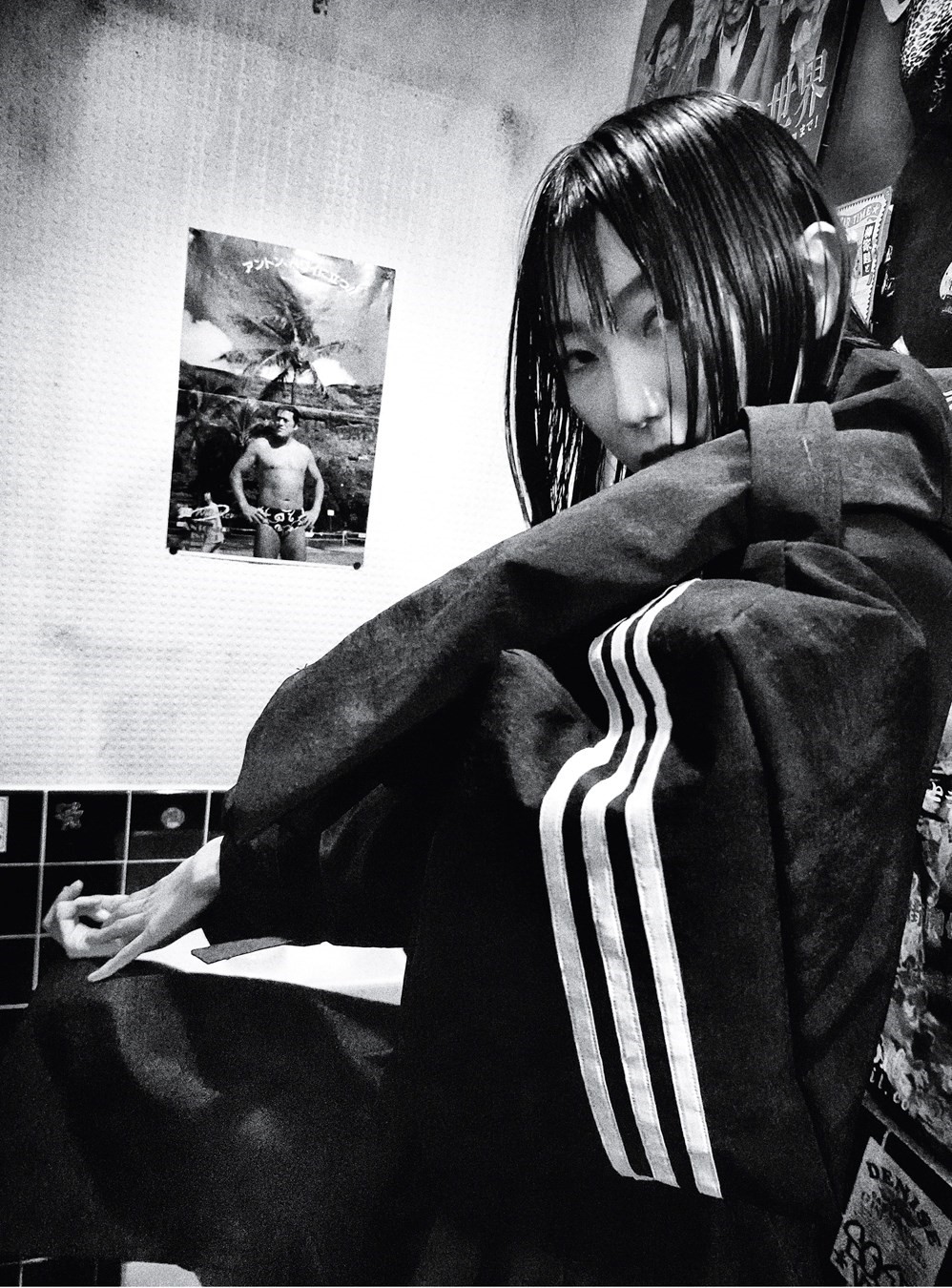
The subjects of Moriyama’s photographs often wear clothing that can feel like a costume, or a constriction of one kind or another, perhaps social or psychological (consider the mannequins in their tawdry garments, the tattered poster of Marilyn, dress blowing up as she stands on the grate). Yamamoto’s designs carry their own connotations here, particularly in the world of a Moriyama photograph, with its close attention to socioeconomic codes, in which each detail contains information, about class, about history, about culture.
Stories unspool from the characters and the setting, dense with possible narratives. But equally significant is the way the clothing bends to another story, one created by the series as a whole.
The second and the closing images act in opposition. At first the woman stands upright, outdoors, sheathed in her dress, the fabric and shape pristine. Later she is crouched low to the ground, in an interior stairwell, every crease and fold in the material visible, an explosion of texture. And yet these figures are in dialogue. Here again are the lovely synchronicities of composition: the saturated shadows, the triple line in the dress, locating its echo in the triple grooves on the stairs. But this time, perhaps, those echoes appear a little earlier, a little faster – you have the sense, perhaps, having spent time with the images, with this collaboration, of having learnt how to read them anew.
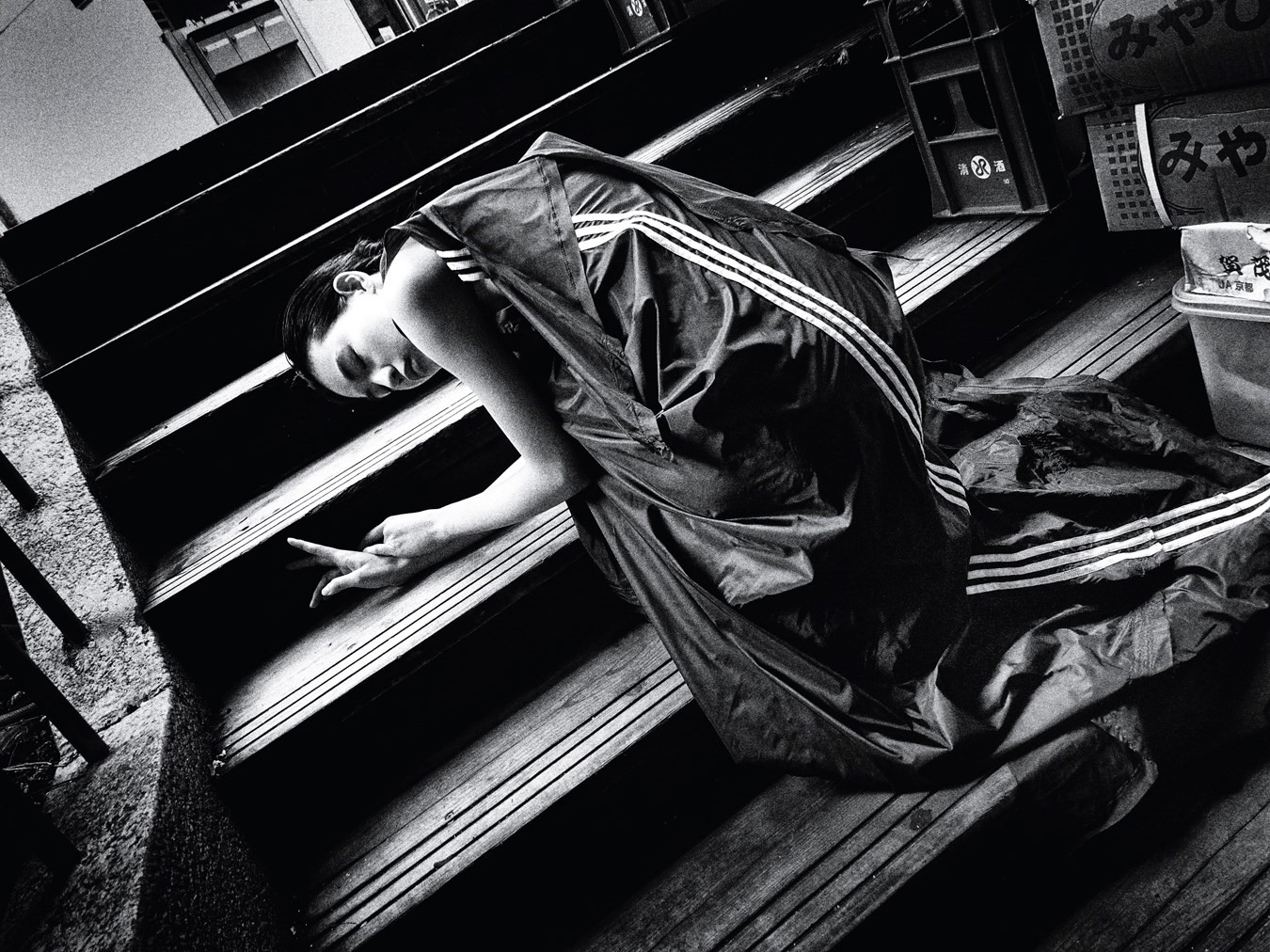
Hair: Nero at MA+Talent. Make-up: Uda Masa. Manicure: Mayu. Models: Jeff, Tamukai at Bark in Style, Mikey at Number Eight Models and Sen at Bravo Models Japan. Casting: Taka Arakawa at Babylon. Movement director: Chikako Takemoto. Photographic assistant: Yurika Hirao. Styling assistants: Isabella Damazio, Kevin Cheung and Dominika Ewa Szmid. Tailor: Jana Christel Dahmen. Production: Farago Projects. Local production: Mr Positive. Special thanks to Sylvia Farago, Emmanuel O’Brien, Antonino Cerminara, Stefano Pierre Beruschi, Sarah Hoerl, Charlie Pender, Zara Walsh and Eliza at Bene Studio
This story features in the Spring/Summer 2023 issue of AnOther Magazine, which is on sale internationally on 23 March 2023. Pre-order here.

